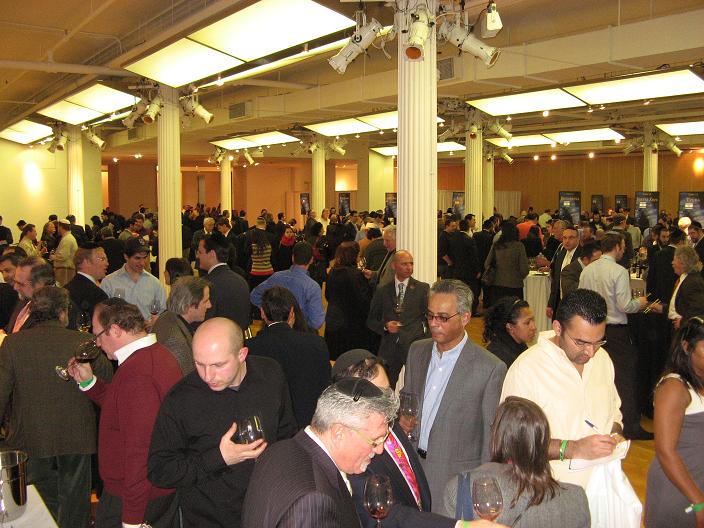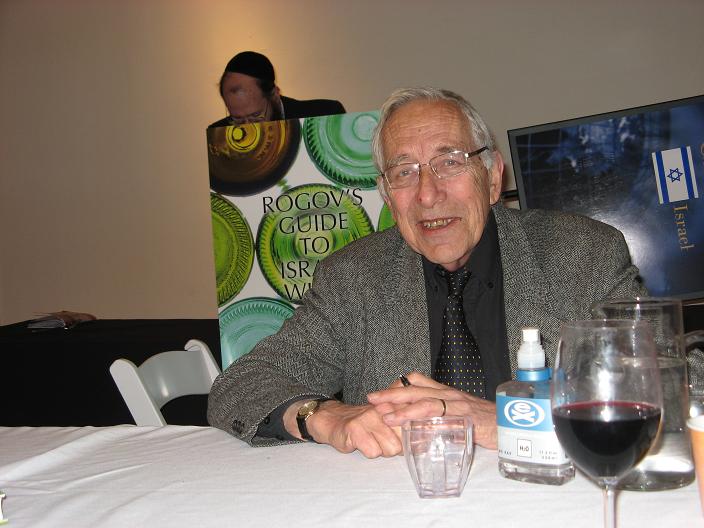With Passover right around the corner (just over 3 weeks and counting) this is my busy season. I have been attending, leading, writing about and dreaming Israeli wine tastings. I do LOVE the stuff, but I suspect that I may deviate just a tad from the typically exclusive Israeli wines at my seder this year.
I must admit however that I did take a very welcome break from Israeli wines last week to attend another in a series of Burgundy tastings with my wine tasting group. Led by our fearless leader Jeremy, and his MUCH BETTER HALF (Thanks for the pics!), we tasted through some selections from the Vougeot & Echezeaux regions of Burgundy. The quality of the vineyards in these regions are considered to be amongst the best with a great majority being classified as Grand Cru or Premier Cru.
Located in the Cote de Nuits, these wines are certainly world class and Jeremy put together a masterful selection of seven wines for this tasting. This tasting also included brief overviews of each of the wines by individual club members who each researched a wine prior to the tasting.

I found the wines common trait to be their minerality/flintiness, but otherwise they were each unique, elegant and certainly thought provoking.
We started with the 2004 Domaine Bertagna VOUGEOT “Clos de La Perriere” 1er Cru which was my least favorite. Others loved this wine, yet I found it to be a bit generic. Don’t get me wrong, it was nice, just not special (to me at least). The clear light ruby wine with pink inflections at the rim had a subtle nose of slate/stone leading to mild red berries. On the palate the fruit was subtle (I suppose some might say elegant) with nice minerality, a touch of heat and a medium length finish.
The 1999 Domaine Francois Legros VOUGEOT “Les Crais” was clear ruby with signs of bricking at the rim. HERE were those funky earthy/vegetal aromas that led to aromas of cherry pie. This was a soft & velvety wine with red fruit, a touch of heat, and a medium to long finish.
The 2002 Vincent Girardin, Clos de Vougeot GRAND CRU was clear ruby with pink & orange inflections at the rim. This wine was not shy and had a LOT going on. A collection of aromas from earth & stone to mint & baked red fruit. On the palate were big red fruit that danced in the back of my palate. This very soft and clean wine finished smooth and long.
The 1988 Clos de Vougeot, Domaine Jean Grivot GRAND CRU was a clear garnet with bricking at the rim. It had that distinct aged Burgundy “pukey” smell. A hint of rubbery aroma led to muddy earth & mulchy aromas. While this may turn some people off, I find it to be fascinating (Burgundy bias anyone?). On the palate was an amazing bracing acidity & baked cherry pie flavors with a long finish.
Moving from Vougoet to Echezeaux, the 5th wine of the night was the 1999 Domaine Laurent (negociant) Echezeaux GRAND CRU. This clear ruby colored wine faded to garnet towards the rim and appeared to be almost clear AT the rim. Initial hits of char & smoke led to an array of aromas from vegetal earth, to ripe baked fruit as well as flinty minerality and a bit of burnt rubber (surprising since it is reported that the winemaker prefers CO2 to SO2 which is what usually gives off the rubbery smell). This fresh and mouth coating wine had great acidity and a lovely minerality with a nice long finish.
The 1991 Camille Giroud Echezeaux GRAND VIN was clear garnet with bricking taking place at the rim. While smelling this wine I had a bit of a wine aroma epiphany. That familiar “pukey” smell I have mentioned on several occasions when referring to Burgundy is quite similar (to me) to canned tomatoes which I think is a much less offensive (to some) descriptor. Look out for this modified aroma descriptor in the future. SO, aromas of canned tomato and earth led to a wine that was soft and elegant with a bright acidity and pretty red fruit. It was lively and round and had a long finish.
The last wine of the night was the 1988 Mongeard-Mugneret Echezeaux GRAND CRU. This cloudy (lots of big & small sediment floating around) brown/brick-orange wine had aromas of canned tomato, minerality and cooked vegetables. On the palate it had a bracing acidity, lovely minerality, and (unbelievably at this point considering its appearance) ripe cherry flavors. It was lively yet soft and elegant and had a long finish.
Happy Pre-Passover BURGUNDY tasting!
WTG



















